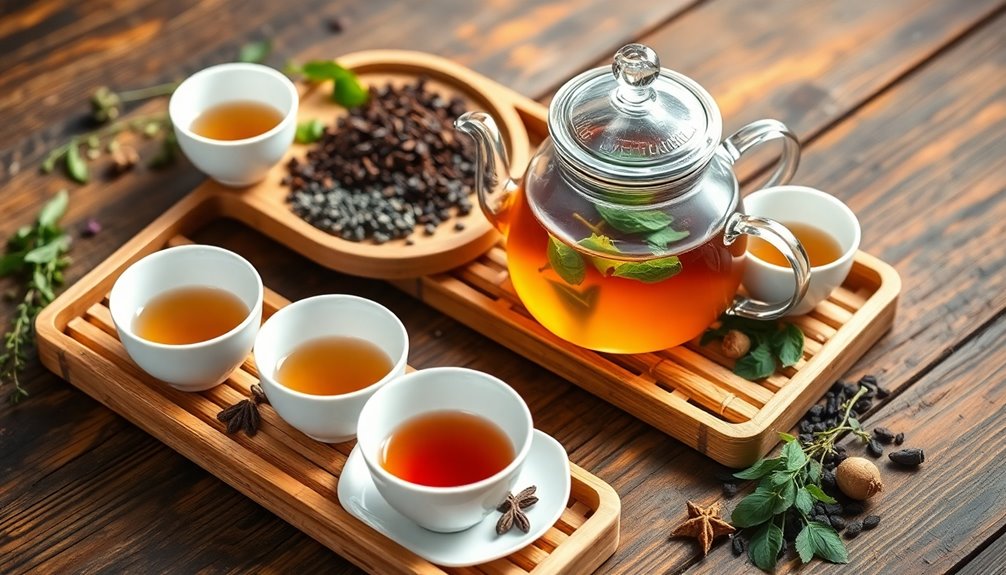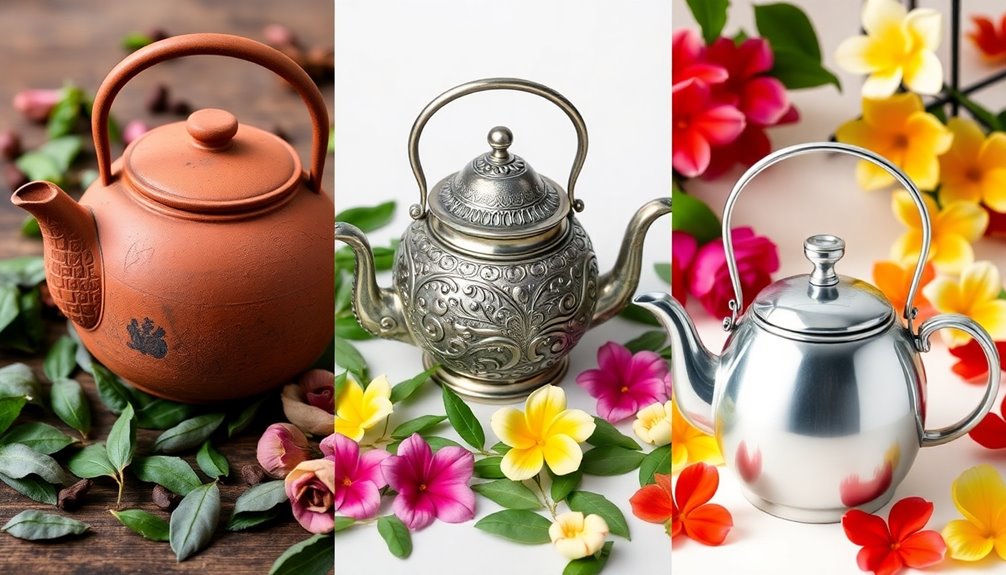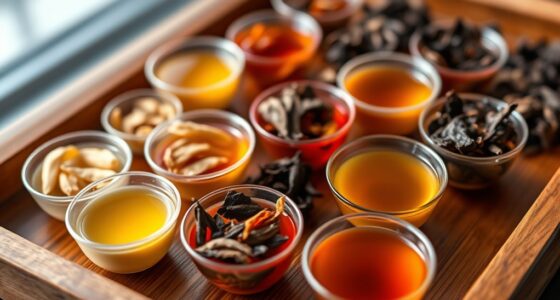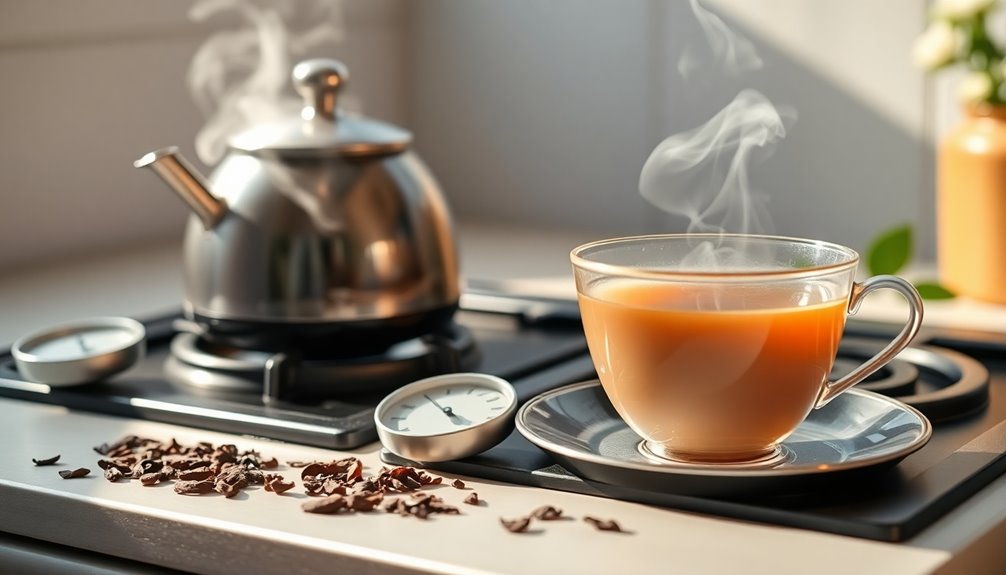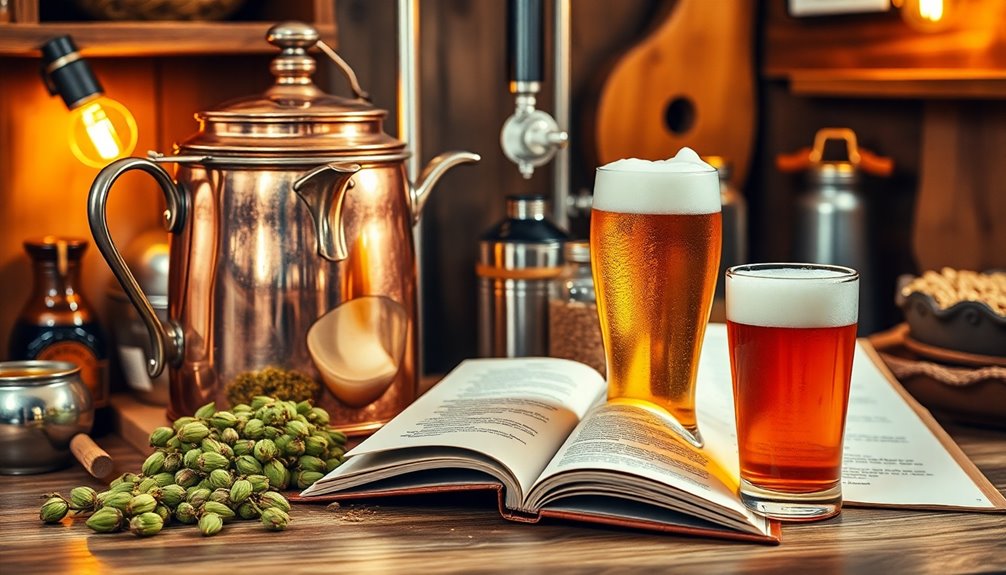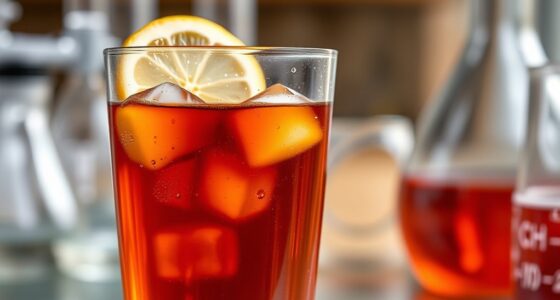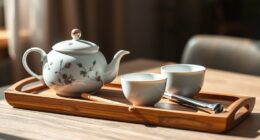If you want to take your tea game to the next level, it's time to pay attention to the details! Each tea type, from delicate white to bold black, has a perfect water temperature and steeping time. Using tools like a Gaiwan or Yixing teapot helps you control every aspect. Don't forget, some teas can even be brewed multiple times for extra flavor! You'll also find that the materials of your teapot can change the taste too. Joining tea communities can add fun, where you can share tips and tricks. Keep sipping, because there's so much more to explore about these tasty brews!
Key Takeaways
- Experiment with various water temperatures and steeping times tailored to each tea varietal for optimal flavor extraction.
- Utilize specialized tools like Gaiwan or Yixing teapots to control steeping and enhance the brewing process.
- Master multiple infusions of each tea to explore evolving flavors and aromas with each steep.
- Join tea communities to share experiences, gain insights, and learn advanced brewing techniques from fellow enthusiasts.
- Understand the role of fermentation in flavor profiles, especially in pu-erh and certain oolongs, to appreciate their complexities.
Introduction
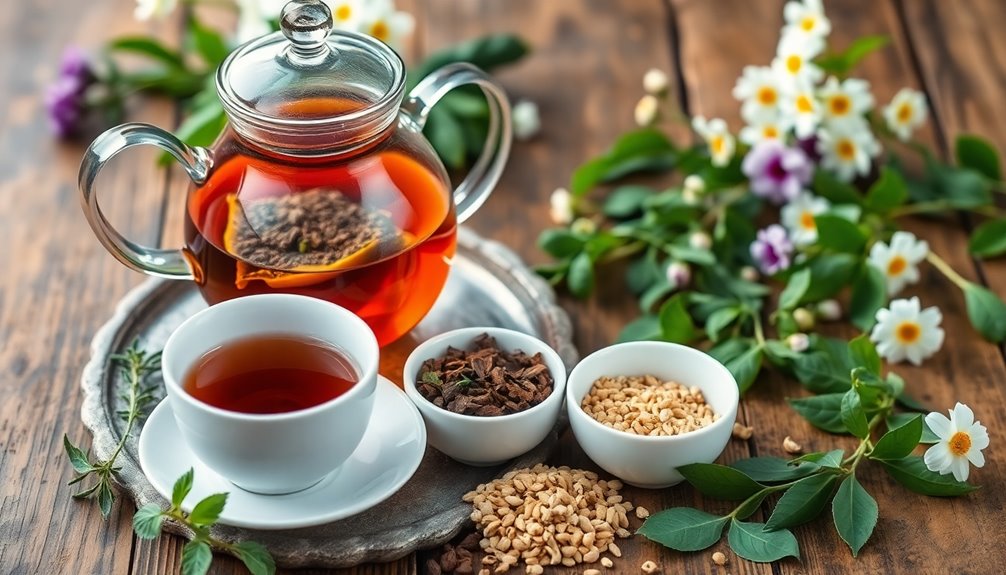
When it comes to tea, mastering advanced brewing techniques can elevate your experience from ordinary to extraordinary. Imagine sipping a cup of perfectly brewed loose leaf tea that dances with flavor! By learning about different brewing methods, you can unlock the secrets hidden in each leaf.
The key players here are water temperature and steeping time. For example, Oolong teas often taste best when brewed at just the right temperature—too hot, and you might scorch the leaves, losing all those yummy flavors.
Using tools like a Gaiwan or Yixing teapot gives you more control over how long you steep your tea. This means you can experiment with different times and temperatures, discovering the unique flavor profile of each tea.
And don't forget, many teas can be brewed multiple times! As you get more skilled, try shortening steeping times for those second or third brews to squeeze out even more flavor.
Joining tea communities and diving into resources can supercharge your learning. You'll connect with other tea enthusiasts, share experiences, and maybe even find a new favorite brew.
Tea Varietals and Their Nuances
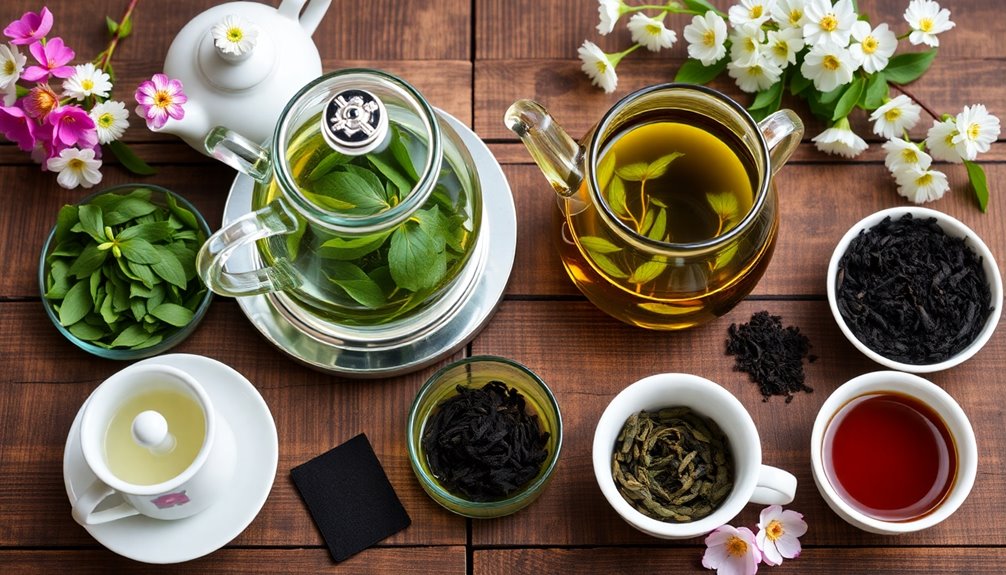
Tea lovers often find themselves enchanted by the rich diversity of flavors that the Camellia Sinensis plant offers. When you dive into the world of different teas, you'll discover six main tea varietals: white, green, oolong, black, yellow, and pu-erh. Each has its unique personality, thanks to the way they're processed.
White tea, for example, is the gentlest of them all, made from young leaves and buds, giving it a soft, subtle taste.
On the other hand, green tea bursts with fresh, grassy notes, especially varieties like Sencha and Matcha, which can change flavor depending on where they're grown.
Then there's oolong tea, which sits comfortably between green and black, offering everything from floral aromas to rich, toasty flavors.
And let's not forget black tea, fully oxidized for a bold taste with famous types like Assam and Darjeeling, each providing a delightful flavor experience influenced by their unique growing regions.
When you engage in tea tasting, exploring these loose leaf tea varietals can be a thrilling adventure. Additionally, many tea connoisseurs appreciate the health benefits associated with flower teas, which are rich in antioxidants and can enhance overall wellness.
Temperature Affects Flavor Extraction
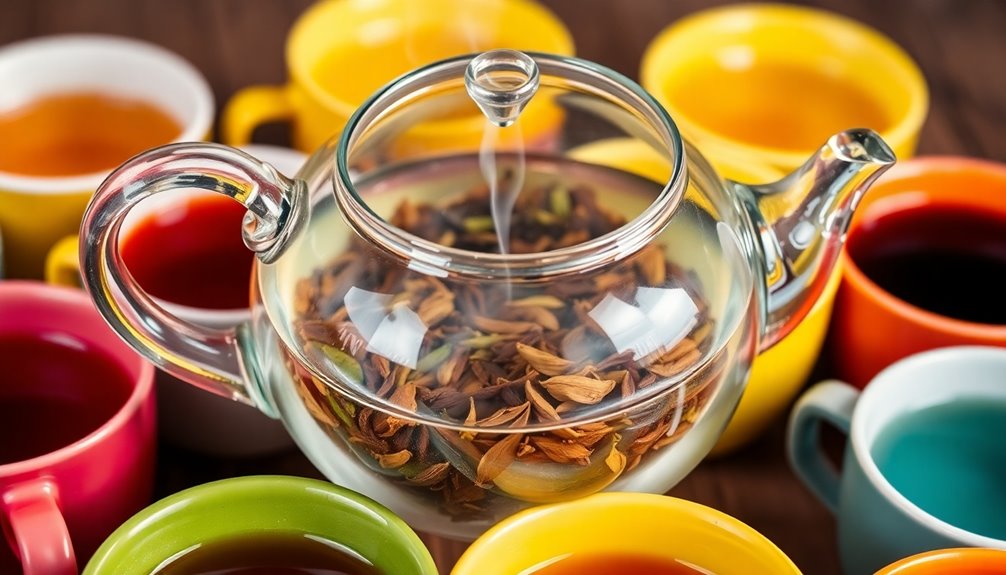
Exploring the nuances of different tea varietals naturally leads you to consider how temperature plays a pivotal role in flavor extraction. Each type of tea has its own ideal brewing temperatures, which can make or break your tea experience.
For instance, delicate teas like green tea should be steeped at 175-185°F (80-85°C). If it's too hot, you might end up with a bitter brew packed with unwanted flavors. On the other hand, black tea thrives at boiling point, around 200-212°F (93-100°C), allowing its rich flavors to shine.
Oolong teas are a bit of a wild card. They can be steeped between 185-205°F (85-96°C), letting you explore various flavor profiles by just adjusting the brewing temperature.
Remember, water temperature affects not only flavor extraction but also aroma, adding a delightful twist to your cup. Even a small 10°F difference can change everything!
Fermentation's Role in Flavor
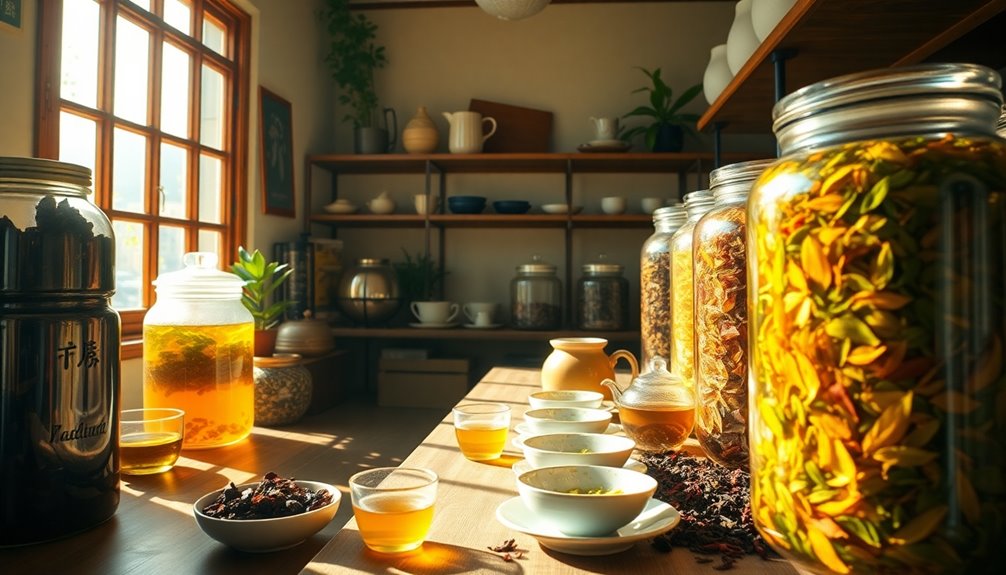
While many factors influence a tea's flavor, fermentation stands out as a transformative process that significantly enhances certain varietals, particularly pu-erh and some oolongs. When you think about how tea leaves change, it's fascinating to realize that microbial activity during fermentation is key!
This process leads to amazing flavor profiles, with pu-erh tea being a shining example. There are two types: "sheng" (raw) pu-erh, which ages naturally, and "shou" (ripe) pu-erh, where fermentation is sped up.
As fermentation happens, complex biochemical reactions break down catechins and create new compounds, giving pu-erh its earthy and mellow tones. The length of fermentation and environmental conditions, like temperature and humidity, can dramatically influence the final taste, often resulting in richer flavors that dance on your palate!
Plus, fermented teas come with health benefits, too! They can help with digestion and pack a punch of antioxidants, thanks to the beneficial microbes and organic acids formed during fermentation.
Brewing Equipment Disparities
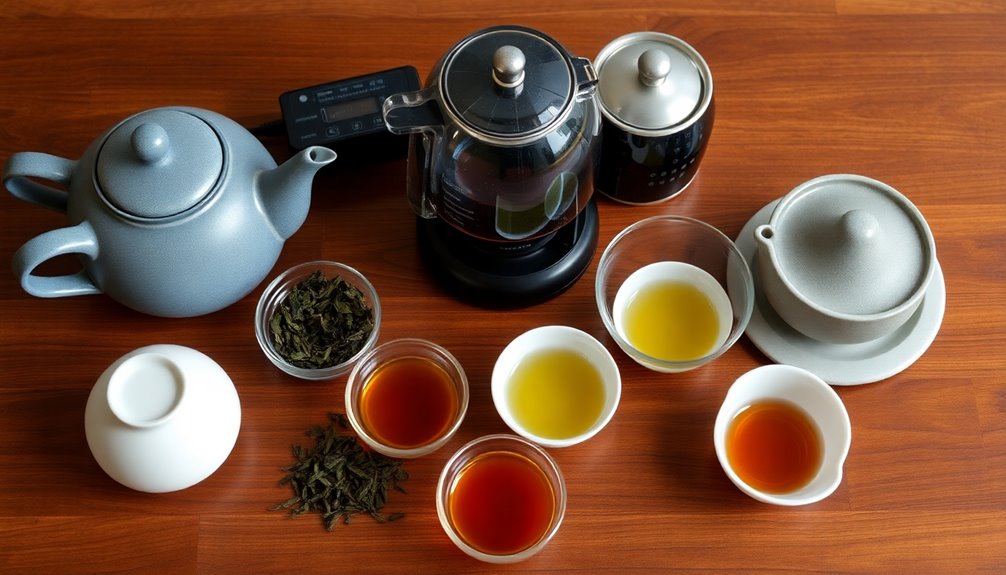
Understanding the nuances of fermentation can elevate your appreciation for tea, but the equipment you use to brew it plays an equally important role. The right brewing equipment can really change your tea experience!
For example, teapot materials like unglazed clay, porcelain, and glass each have special qualities. Unglazed clay teapots, especially Purple Clay, are great for enhancing the flavor profile of loose leaf tea because they absorb oils from the tea. On the other hand, glass teapots let you watch the color and strength of your tea as it brews.
Heat retention is also key. High-fired clay teapots work wonders for delicate teas like Green and White, while low-fired pots are perfect for robust teas like Black and Pu-Erh. The size of the teapot's opening matters too; a wider opening helps with oxygenation, improving the infusion process.
Don't forget about your kettle! A quality kettle, especially one that controls water temperature, is super important. Different tea types need different temperatures for the best flavor extraction, so investing in good equipment can make all the difference in your brewing techniques! Additionally, using a precise temperature control kettle can significantly enhance your ability to brew specialty teas with distinct flavor profiles.
Happy brewing!
Practical Applications
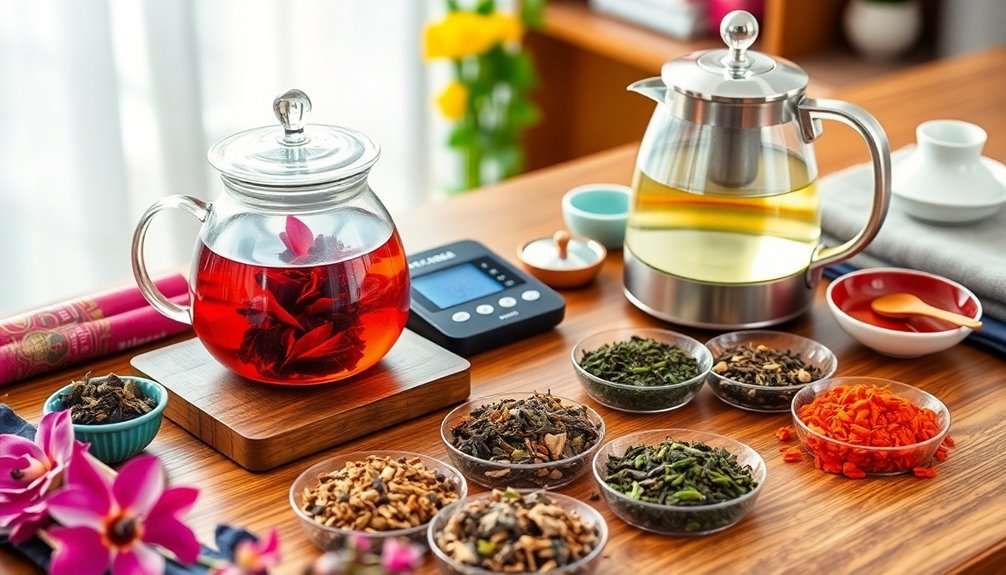
When it comes to brewing tea, applying practical techniques can take your experience to the next level. Start by measuring your loose leaf tea with a digital scale. A good rule of thumb is 1 teaspoon, or about 2-3 grams, of tea per 8 ounces of water.
Next, think about your brewing method. Experimenting with different water temperatures and steeping times can really enhance the flavor profiles of your tea. Remember, the second brew usually needs a shorter steep time than the first to balance the extraction.
Don't forget about the teapot! Using materials like unglazed clay or Yixing teapots can change the taste and aroma of your brew over time. You might even want to rinse your tea leaves before brewing, especially for pu-erh and oolong, to awaken those hidden flavors and remove any impurities. A proper brewing method ensures optimal extraction and flavor enhancement.
Lastly, keep a tea journal! Jotting down your brewing experiments—like water quality and steeping times—will help you refine your techniques and understand your favorite teas better.
Frequently Asked Questions
What Is the Best Method of Brewing Tea?
To brew the best tea, consider the type you're using. For black tea, steep at boiling temperatures for 3-5 minutes; for green, use cooler water for 1-3 minutes to avoid bitterness.
How to Be a Tea Connoisseur?
To become a tea connoisseur, deepen your understanding of tea varieties, practice precise brewing techniques, engage in tastings, connect with producers, and keep detailed notes on your experiences and preferences for continuous improvement.
What Is Grandpa Style Tea?
Grandpa style tea lets you brew directly in a cup, embracing spontaneity and flexibility. You can adjust water and steeping time, making it a casual, forgiving method perfect for discovering your favorite lighter teas.
How to Make Xiao Guan Cha Tea?
To make Xiao Guan Cha, start by warming your teapot. Use 1 gram of tea per 15-20 milliliters of water. Rinse the leaves, steep for 30 seconds, then enjoy the evolving flavors through multiple infusions.
Conclusion
Now that you've learned about advanced brewing techniques, it's time to put your skills to the test! Experiment with different tea varietals, play around with temperatures, and explore how fermentation changes flavors. Each cup you brew can be a delightful adventure! Remember, the right equipment can make all the difference, so choose wisely. With a dash of creativity and a sprinkle of fun, you'll impress your friends and family with your tea expertise. Happy brewing!

